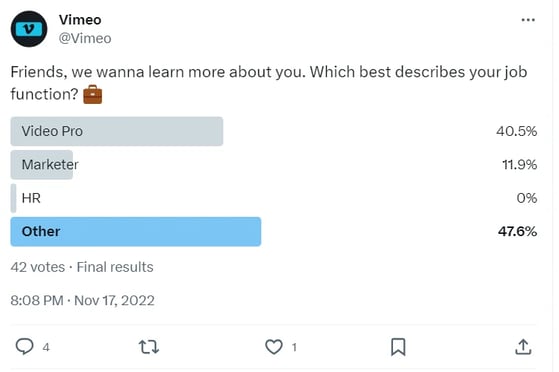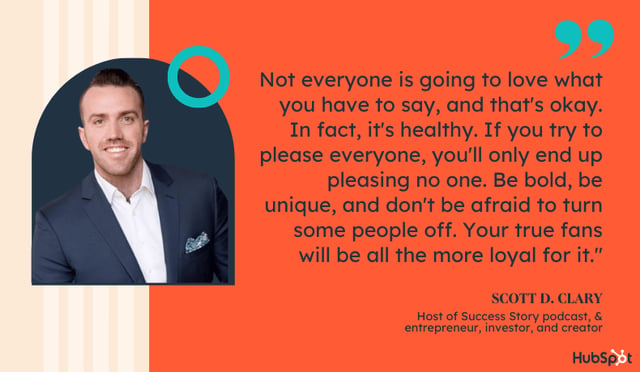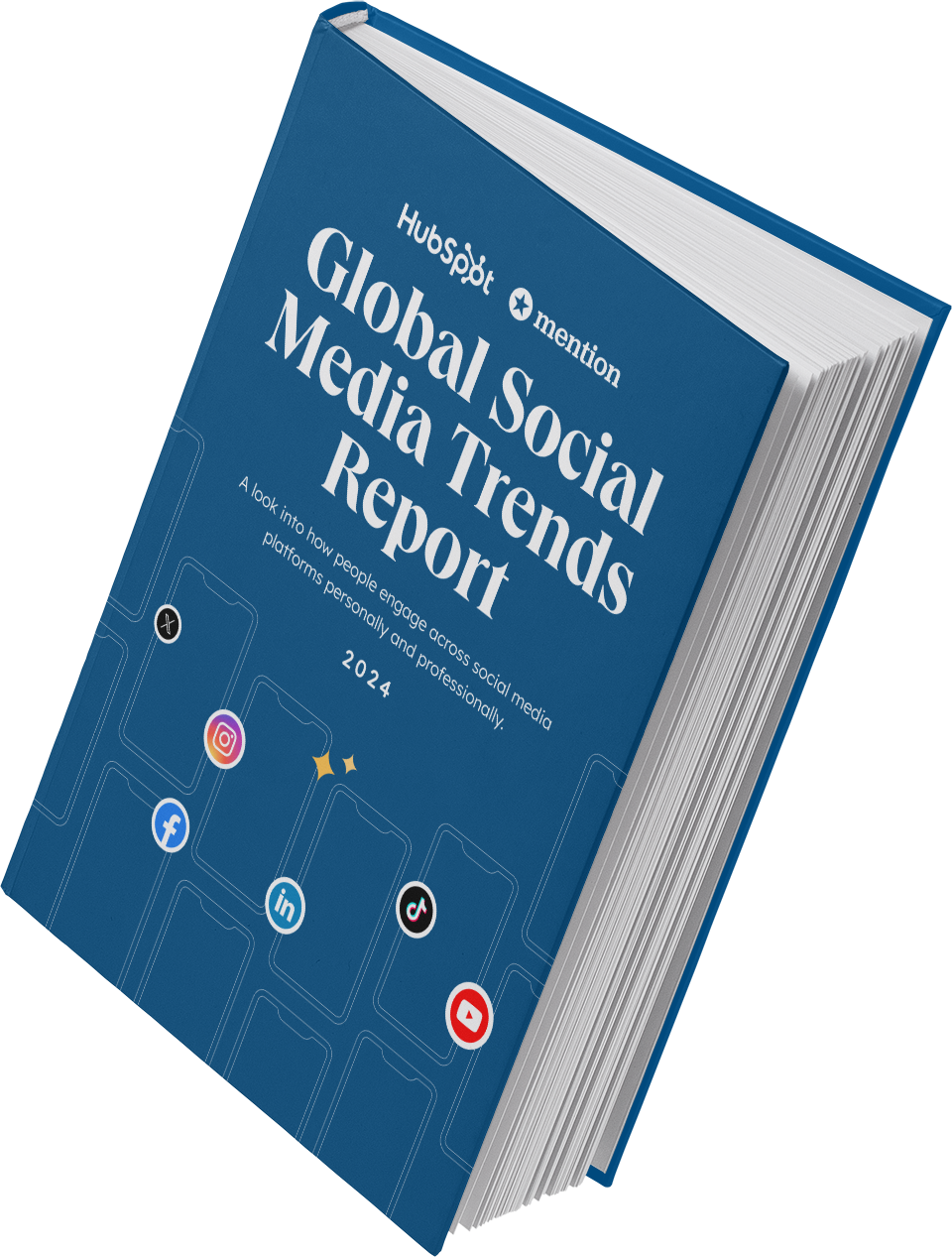Over the past year, we've seen a major shift when it comes to the importance of building social communities. And, as of 2024, 86% of social media marketers say building an active online community is crucial to a successful social strategy.

Active social communities can establish your brand as an industry expert and provide additional value to your consumers. But understanding the importance of online communities and successfully building one are two different things.
That's why I spoke with six social media marketers and creators who have worked with Vimeo, HubSpot, The Product Boss, Success Story, and Online Marketing Made Easy to learn tips for building and maintaining effective online communities.
Let's dive in.
Building Brand Communities [Expert Tips]
1. Make sure your community-building tactics are unique to each platform.
Alexis Nash, Vimeo's former Social Media Lead, believes that tightly-knit communities should be built across each platform your brand uses — as she puts it, "communities put the 'social' in social media!"
However, to effectively build strong communities on each platform, you need to adhere to the best practices of each individual channel.
Nash says amplified user-generated content with TikTok’s Duets feature in 2023. The company posted question stickers on Instagram Stories and reposted answers, sparking reciprocal dialogue.
Furthermore, they reward their most engaged followers by sharing exclusive material through Instagram’s "Close Friends" feature.
Nash explains, "[Adhering to the best practices of each channel] yields a nuanced experience reflecting audiences’ natural behavior on each network."
[COMING FEBRUARY 15] The State of Social Media in 2023: Click Here to Set a Google Calendar Reminder
Jacqueline and her former co-host Minna of The Product Boss, a top-rated podcast that provides strategies and tips for product entrepreneurs, have cultivated more than 97,600 followers on Instagram alone.
They agree that one of the most critical components of building and maintaining a successful online community is by diversifying your content for each platform to fulfill the needs of that audience.
As they put it:
"We’re really proud to say we’ve built a really strong global community of product bosses around us. We love to show up socially in different ways.
We keep it pretty dynamic, whether it’s LIVE’s, IG stories, Reels, FB Group posts and events, and above all, we encourage them to show up WITH us and often thank them for doing so.
We are generous in our information and conversations, so we make it a fun, relatable, positive community to be a part of."
Mat Cruz, former Community Management & Growth Specialist for the HubSpot Social Media team, agrees with this sentiment.
"You would never try to grow a plant in an environment that does not suit it," he says. "Similar to plants, communities grow best when they are nurtured in environments where connection is easy and needs are not only met, but exceeded."
Take the time to evaluate what types of content perform best on each platform, and what types of conversations happen on each.
Over time, you'll want to create community-building strategies that are unique for each platform.
Or, if you don't have the resources to dedicate to each platform, instead identify one platform you'd like to go all in on when it comes to cultivating a strong community.
2. Inspire your community through valuable content.
Amy Porterfield is a consultant for entrepreneurs, as well as the host of Online Marketing Made Easy, a top-ranking business podcast, and author of Two Weeks Notice.
She's also built a strong, loyal social following — in fact, her Instagram alone has over 433,000 followers.
Porterfield believes the most important component of building a strong online community is good content.
As Porterfield told me, "When building your online community, your goal is always to leave your followers thinking, 'If this is what they offer for free, I wonder what their paid content is like?' So don’t be afraid to give your best stuff away for free."
Porterfield continues, "It’s important to inspire your community to dream big, then consistently offer them irresistible free value to help support them in making progress on their dreams."
For instance, you might post a video on Facebook and ask your community to weigh in with their own opinions. Alternatively, you might test out polls on Instagram to get your audience engaged in a quick and easy way.
Or, consider how Porterfield offers free Masterclasses to her social followers, like the one posted below:
Without grounding your community in truly valuable, thought-provoking content, it won't be easy to compel them to stick around.
3. Get to know your community and identify what purpose your online community aims to serve.
A few years ago, I joined a yoga workshop because I wanted to connect with like-minded people who also enjoyed practicing yoga.
In other words: I wanted to find a community centered around my interests.
Similarly, people join online communities to connect with people who share their passions or goals.
So, to effectively cultivate an online community, Cruz recommends marketers take the time to understand their audiences' interests and the goal(s) of your community.
"You'll want to ask yourself what purpose your online community aims to serve. Is it to entertain? To educate? To engage in conversation?" Cruz told me.
He explains, "Knowing who and why you’re crafting connections helps you determine the next key decision — where to plant your community’s seeds."
He used a community of artists as an example.
He says if you have a community of artists looking to share their work with other creatives, Instagram might be best.
Whether you’re sharing a tutorial via Instagram Reels or your latest collection through a carousel, Instagram’s platform has users primed to expect and engage with such content.
"On the other hand," he explains, "if you are looking to host events and connect large groups of people, Facebook may be a better place to grow since its tools and features make it easy to create events, form groups, and host conversations."
It's up to you to identify the interests of your audience and how those interests might tie back to your business' products or services. But it's a vital component of building the right kind of online community for your brand.
Nash agrees that conducting research is an important step to take when building online communities.
She says, "[Vimeo] launched polls and asked questions on social to assess its users’ demographic makeup, needs, and behavior patterns. Use this data to nurture relationships with your existing community and provide value."
As Nash puts it, "Many teams hyper-fixate on growing their follower numbers, alienating their existing community."
Take a look at how Vimeo cleverly uses X to ask targeted questions and build a more comprehensive view of its X audience:

4. Provoke thoughtful debate, and be unique.
Scott Clary, host of Success Story podcast, has cultivated more than 85,000 subscribers on his YouTube channel, and he encourages marketers to provoke thoughtful discussions with their online communities.
"This means challenging the status quo and encouraging your audience to think differently," he says. "Give them something to question, something to debate, and something to challenge their existing beliefs."
He explains they will be more likely to remember you, even if they disagree with you.
"This can also mean giving them a forum to debate important topics around your area of expertise," he says.
Clary also recommends marketers embrace contrarianism because not everyone is going to love what you have to say.
"And that's okay," he says. "In fact, it's healthy. If you try to please everyone, you'll only end up pleasing no one. Be bold, be unique, and don't be afraid to turn some people off. Your true fans will be all the more loyal for it."

It's important your brand remains empathetic, inclusive, and kind.
However, it's equally vital for you to provide expertise or a thought leadership perspective to your community, and that might mean creating content that demonstrates your own brand's stance on industry challenges and best practices.
5. Cultivate a vulnerable, genuine space for people to be themselves.
Finally, it's vital to practice authenticity in your community. Humans join communities to connect with other humans.
So to cultivate a strong community, it's your job as the community leader to foster a genuine, open space for people to be their full selves.
As Jacqueline and Minna put it, "You have to show up often, but imperfectly, and most importantly, genuinely — we ask them to stay, we ask them to follow us."
They explain, "We ask them to interact and lean on each other, as we equip them on how to build their businesses. Asking and inviting them and taking care of their needs helps build a bond in your community."
They add, "And, above all, be yourself — the right people for your community will gravitate towards you and the wrong people will be repelled, and that's truly a good thing."
For instance, take a look at one of The Product Boss' recent Instagram post about the real struggles behind entrepreneurship. Most importantly, pay attention to the comments, filled with people who feel validated, heard, and understood.
Nash agrees.
As she puts it, "Think about LinkedIn’s evolution from a buttoned-up networking space to a true social platform."
She says, "Users discuss everything, including mental health, family life, funny interactions they had that morning, and more. As LinkedIn communities let their hair down, brands may benefit from matching that vulnerability."
She continues, "No matter what community-building tactics you choose, lead with humanity. Social marketers must tap into their empathy to make their audiences feel heard, improve their daily lives, and cultivate lasting relationships."
Brand Community Examples
Here are some examples to consider when building a brand community. If at the end, you feel ready to carve out your own community, take a look at How to Launch a Successful Online Community: A Step-by-Step Guide.
1. Google invests in Labs.
At Google, community success comes in the form of collaborative groups, or what Google calls "Labs."
Each Google Lab brings together approximately 100 thought leaders in specific industries to tackle some of today's most pressing issues.
What I Love: Google Labs fosters mutual respect and concern among members, which spawns conversations, collaborations, and opportunities that were never possible before.
It's part of what keeps Google at the top of every "most innovative" company list today.
2. Twitch succeeds with local groups.
Twitch attracts around 2.5 million people per month to watch and livestream digital video broadcasts.
Their approach is built on a two-sided marketplace: they need to attract broadcasters as well as audience members. Local community groups help them succeed.
Twitch has built a worldwide team to support over 40 local, city-based groups, each of which hosts real-life and virtual events that foster genuine friendships and deep relationships between local Twitch members.
However, local groups (and their leaders) must demonstrate how well they can bring members together, first.
These local groups allow Twitch to transform online interactions — which can often feel transactional — into connections that have real meaning.
Members return again and again to the brand, and recruit others to participate, because Twitch is a space where authentic emotional investments happen.
What I Love: Twitch has built a strong brand community that transcends the platform by focusing on the local aspect of community building.
3. Sephora says "yes" to beauty enthusiasts.
Sephora — one of the largest beauty retailers in the world — has invested in building a makeup enthusiast community that is both accessible on mobile devices and integrated into the shopping experience.
Inside the community, members can discuss a variety of beauty products and methods, regardless of whether they're related to Sephora products or not.
Within the community, Sephora enables members to follow interesting topics and connect with fellow members, keep up with trends and chat with brands, and score access to exclusive events.
Community members can also gain access to beauty techniques and product information, engage with beauty company founders, and experience an affirming space with others who love the fun, play, and transformation of makeup.
Pro-Tip: When building a brand community think of ways you can bridge the gap between consumers and experts, creating a safe space for your customers to get advice and better insight into your products.
4. Roblox is its own digital world.
I simply can't talk about brand communities without mentioning Roblox. If you don't know, Roblox is an online gaming platform with 70.2 million daily active users as of January 2024.
The platform allows users to build games, generate virtual worlds, and create avatars to immerse themselves in the digital community.
Even celebrities like Lil Nas X, LeBron James, and Miley Cyrus have joined the Roblox metaverse by hosting special in-game meet-ups and concerts.
Pro-Tip: Roblox has created an entirely immersive experience for users. Think about the way your brand community can be immersive for your consumers.
What can make the community exciting and engaging in a way that will keep them coming back for more?
5. Tumblr maintains rapport with its users.
HubSpot marketing manager Erica Santiago recently spoke to the Chief Marketing Officer of Tumblr, Matthew Ryan, about how Tumblr has maintained a thriving online community since its inception in 2007.
"We lean toward two brand tenets," he explained to Santiago. "The first one is fandom; we're a great place for fans to really go deep into their particular fandom of choice."
Ryan said other platforms are places where fans may go to give live reactions to their favorite series, but Tumblr is where fandoms live long after a series wraps.
The reason behind this, according to Ryan, is that is a platform that isn’t heavily driven by algorithms. It's more of a "blank" platform that allows users to post and interact with whatever they want.
"Our users have the ability to create or produce their art and their stories around characters and plots they find compelling," he said. "Fandom is a big source of our creativity and life on the platform."
This leads to the brand's second tenet—providing a virtual space for art and artists to thrive.
"We are a blank platform and one of the only platforms that still allows all media types and has done so since the inception of Tumblr … That gives artists, especially, a ton of freedom," he said.
Pro-Tip: Think about your core audience and the unique qualities and interests they bring to the table. Find ways to build community around those qualities and interests. This shows you're in tune with your consumers and what best serves them.
6. Apple builds a community to support questions and help consumers.
You might think a brand as massive as Apple wouldn't have much use for online communities, but the company actually found a simple but unique way to incorporate the concept of community into its marketing.
Apple's brand community consists of volunteers who are passionate and knowledgeable about the company's products. They dedicate time out of their day to help customers with any questions or bugs they're experiencing.
Apple rewards the volunteers by placing top commenters in an exclusive Apple expert community, lending legitimacy and trust to the volunteers and prompting more customers to seek their help.
Pro-Tip: Consider providing incentives and rewards for community members to be as active and as helpful as they can. These rewards can be access to exclusive features or spaces.
7. Adobe Support Community
If you've ever edited a video with Adobe Premiere, then you know there can be a bit of a learning curve when using Adobe and its products. In fact, there are some college courses dedicated to learning its basics.
That's why Adobe has its own support community where creatives can gather online and trade advice on using Adobe products.
What I Like: Adobe understands that while its products are valuable, they can be complicated to newbies, so it fostered a community where its consumers can get the answers they need and grow as creators.
Ultimately, cultivating a strong online community takes time and effort, but it will pay off in the long run by enabling your brand to create effective, meaningful connections with your audience.
HubSpot uses the information you provide to us to contact you about our relevant content, products, and services. HubSpot will share the information you provide to us with the following partners, who will use your information for similar purposes: Mention. You can unsubscribe from communications from HubSpot at any time. For more information, check out HubSpot's Privacy Policy. To unsubscribe from Mention's communications, see Mention's Privacy Policy.

The State of Social Media in 2024
Explore the top trends in social media for brands to know and optimize your social strategy.
- AI Content Creation
- Community Building
- Social Media Shopping
- Social Vs. Search Engine
![Download Now: The 2024 State of Social Media Trends [Free Report]](https://no-cache.hubspot.com/cta/default/53/3dc1dfd9-2cb4-4498-8c57-19dbb5671820.png)

![8 Data-Backed Recommendations for Social Media Marketers in 2023 [Insights from 1,000+ Professionals]](https://blog.hubspot.com/hubfs/social%20media%20recommendations%20for%202023-1.jpg)